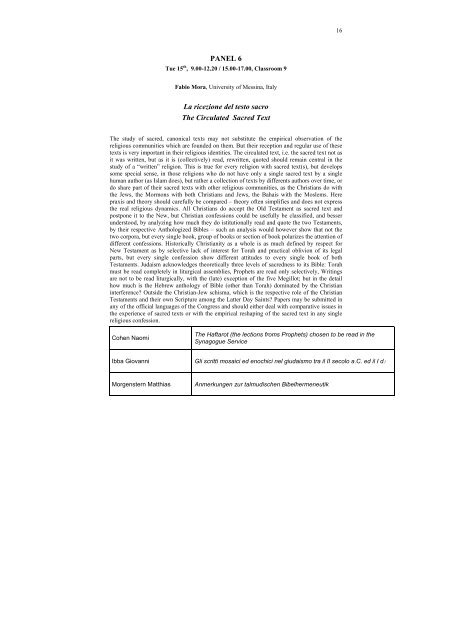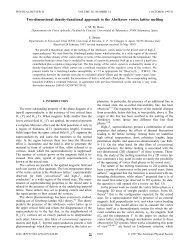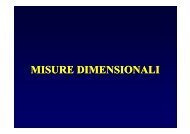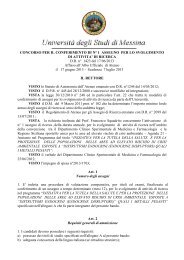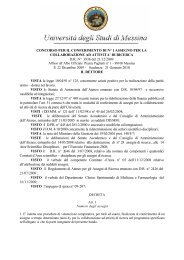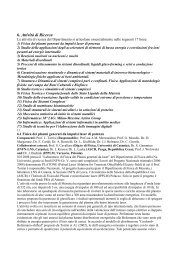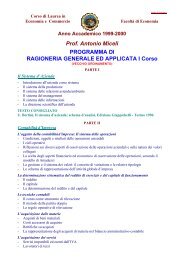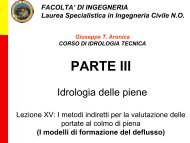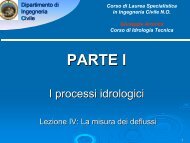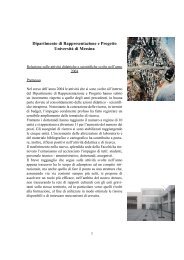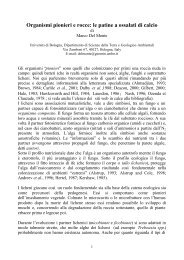PROGRAMME AND ABSTRACTS - Università degli Studi di Messina
PROGRAMME AND ABSTRACTS - Università degli Studi di Messina
PROGRAMME AND ABSTRACTS - Università degli Studi di Messina
You also want an ePaper? Increase the reach of your titles
YUMPU automatically turns print PDFs into web optimized ePapers that Google loves.
PANEL 6<br />
Tue 15 th , 9.00-12.20 / 15.00-17.00, Classroom 9<br />
Fabio Mora, University of <strong>Messina</strong>, Italy<br />
La ricezione del testo sacro<br />
The Circulated Sacred Text<br />
The study of sacred, canonical texts may not substitute the empirical observation of the<br />
religious communities which are founded on them. But their reception and regular use of these<br />
texts is very important in their religious identities. The circulated text, i.e. the sacred text not as<br />
it was written, but as it is (collectively) read, rewritten, quoted should remain central in the<br />
study of a “written” religion. This is true for every religion with sacred text(s), but develops<br />
some special sense, in those religions who do not have only a single sacred text by a single<br />
human author (as Islam does), but rather a collection of texts by <strong>di</strong>fferents authors over time, or<br />
do share part of their sacred texts with other religious communities, as the Christians do with<br />
the Jews, the Mormons with both Christians and Jews, the Bahais with the Moslems. Here<br />
praxis and theory should carefully be compared – theory often simplifies and does not express<br />
the real religious dynamics. All Christians do accept the Old Testament as sacred text and<br />
postpone it to the New, but Christian confessions could be usefully be classified, and besser<br />
understood, by analyzing how much they do istitutionally read and quote the two Testaments,<br />
by their respective Anthologized Bibles – such an analysis would however show that not the<br />
two corpora, but every single book, group of books or section of book polarizes the attention of<br />
<strong>di</strong>fferent confessions. Historically Christianity as a whole is as much defined by respect for<br />
New Testament as by selective lack of interest for Torah and practical oblivion of its legal<br />
parts, but every single confession show <strong>di</strong>fferent attitudes to every single book of both<br />
Testaments. Judaism acknowledges theoretically three levels of sacredness to its Bible: Torah<br />
must be read completely in liturgical assemblies, Prophets are read only selectively, Writings<br />
are not to be read liturgically, with the (late) exception of the five Megillot; but in the detail<br />
how much is the Hebrew anthology of Bible (other than Torah) dominated by the Christian<br />
interference? Outside the Christian-Jew schisma, which is the respective role of the Christian<br />
Testaments and their own Scripture among the Latter Day Saints? Papers may be submitted in<br />
any of the official languages of the Congress and should either deal with comparative issues in<br />
the experience of sacred texts or with the empirical reshaping of the sacred text in any single<br />
religious confession.<br />
Cohen Naomi<br />
16<br />
The Haftarot (the lections froms Prophets) chosen to be read in the<br />
Synagogue Service<br />
Ibba Giovanni Gli scritti mosaici ed enochici nel giudaismo tra il II secolo a.C. ed il I d.C.<br />
Morgenstern Matthias Anmerkungen zur talmu<strong>di</strong>schen Bibelhermeneutik


